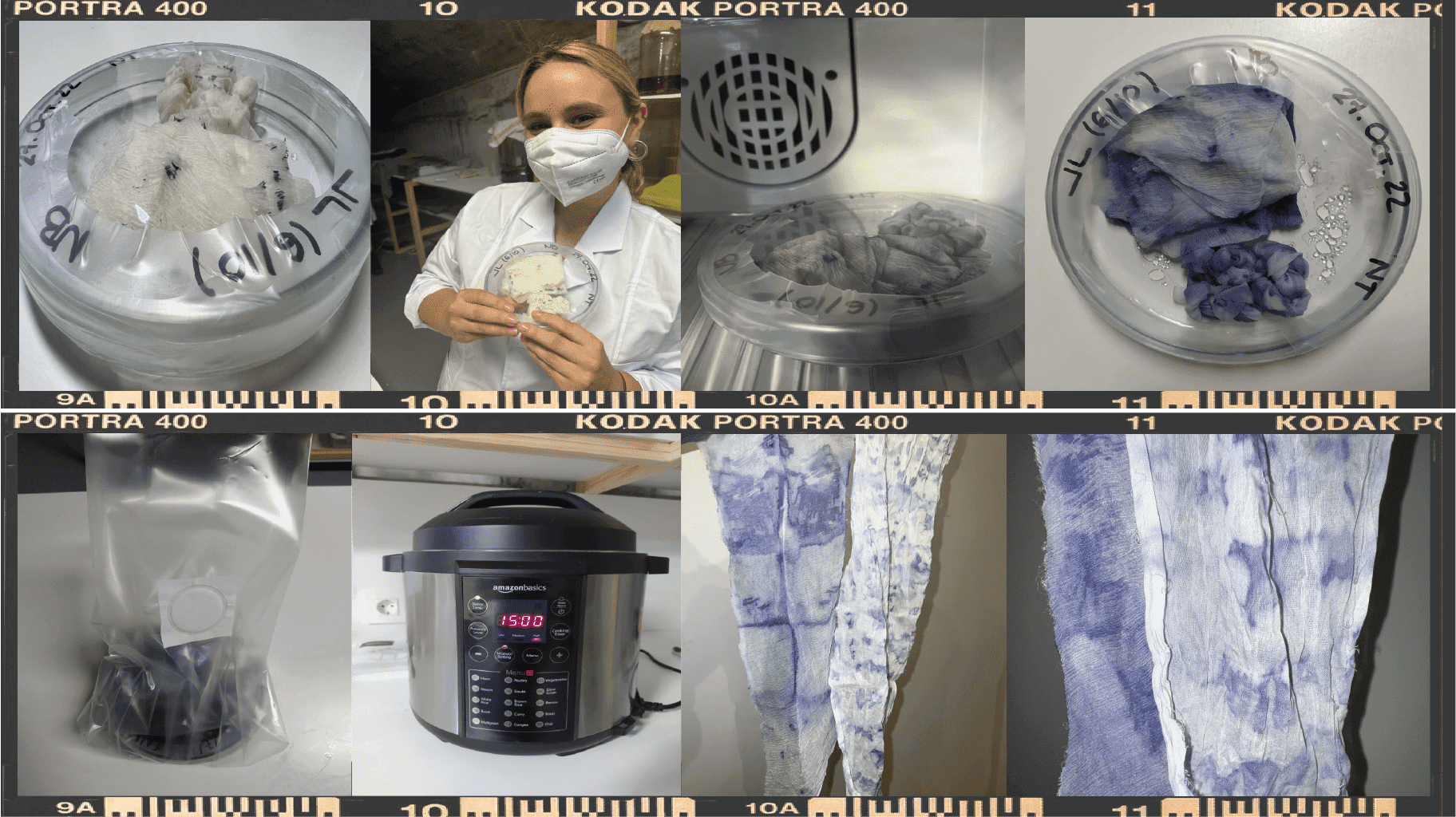4. BIOCHROMES¶
WEEK WORK¶
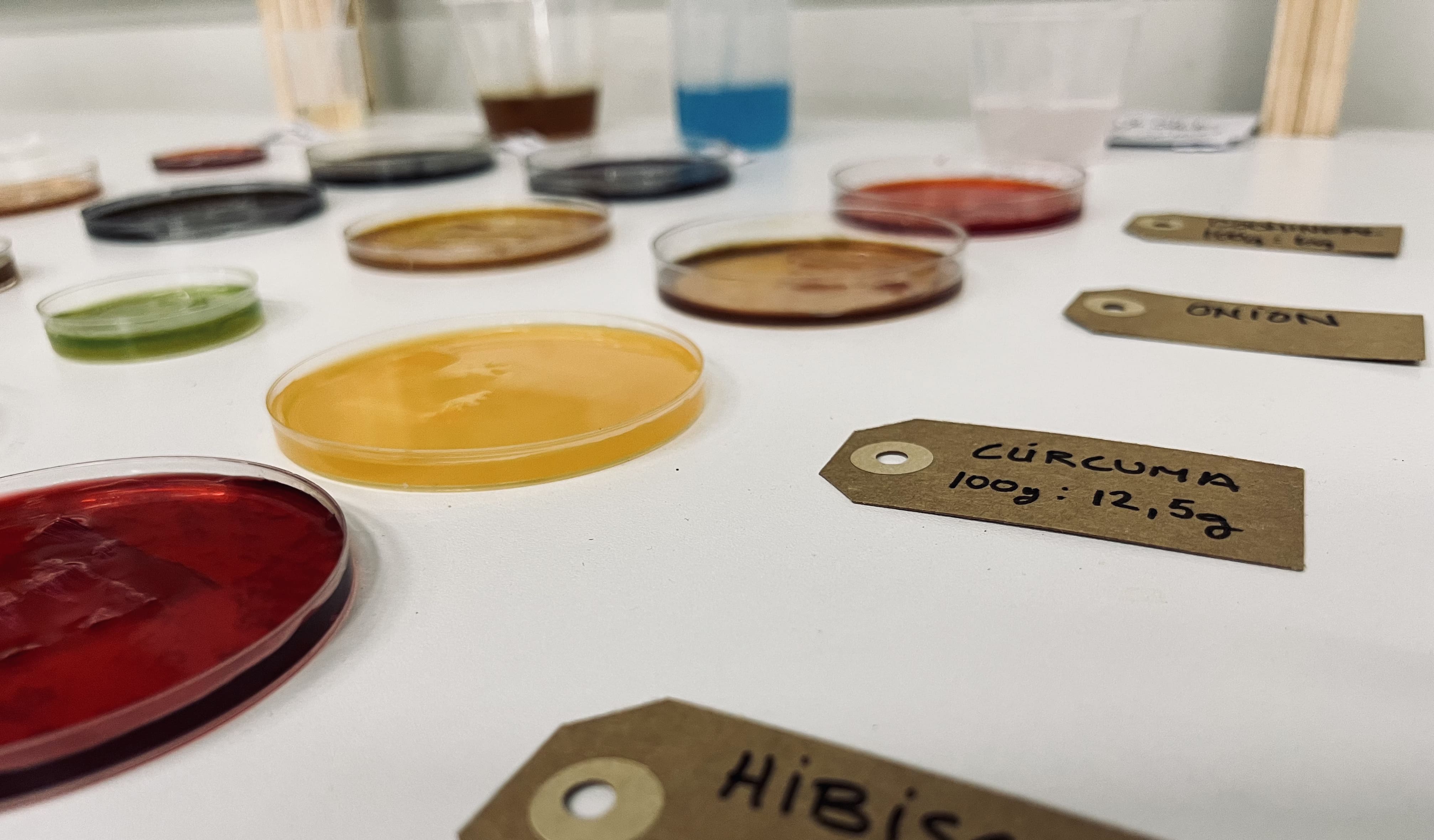 We well know that the dyes found in our clothes are harmful not only to our heath, but also to the environment, so this week we hace worked with natural dyes and pigments that we have learned about thanks to the presentation by Cecilia Raspanti.
We well know that the dyes found in our clothes are harmful not only to our heath, but also to the environment, so this week we hace worked with natural dyes and pigments that we have learned about thanks to the presentation by Cecilia Raspanti.
PROCESS AND WORKFLOW¶
Although each colleague has focused on dye, here at the BDC we have worked as a group to be able to enjoy the experience more and observe the infinite possibilities that colors had when they came together and experimented with them. For them we have followed some instructions on how to first prepare the fabrics and fibers before being dyed, u can fin the recipies here, it is important to know that depends on the fabrics, the treatments are going to be different.
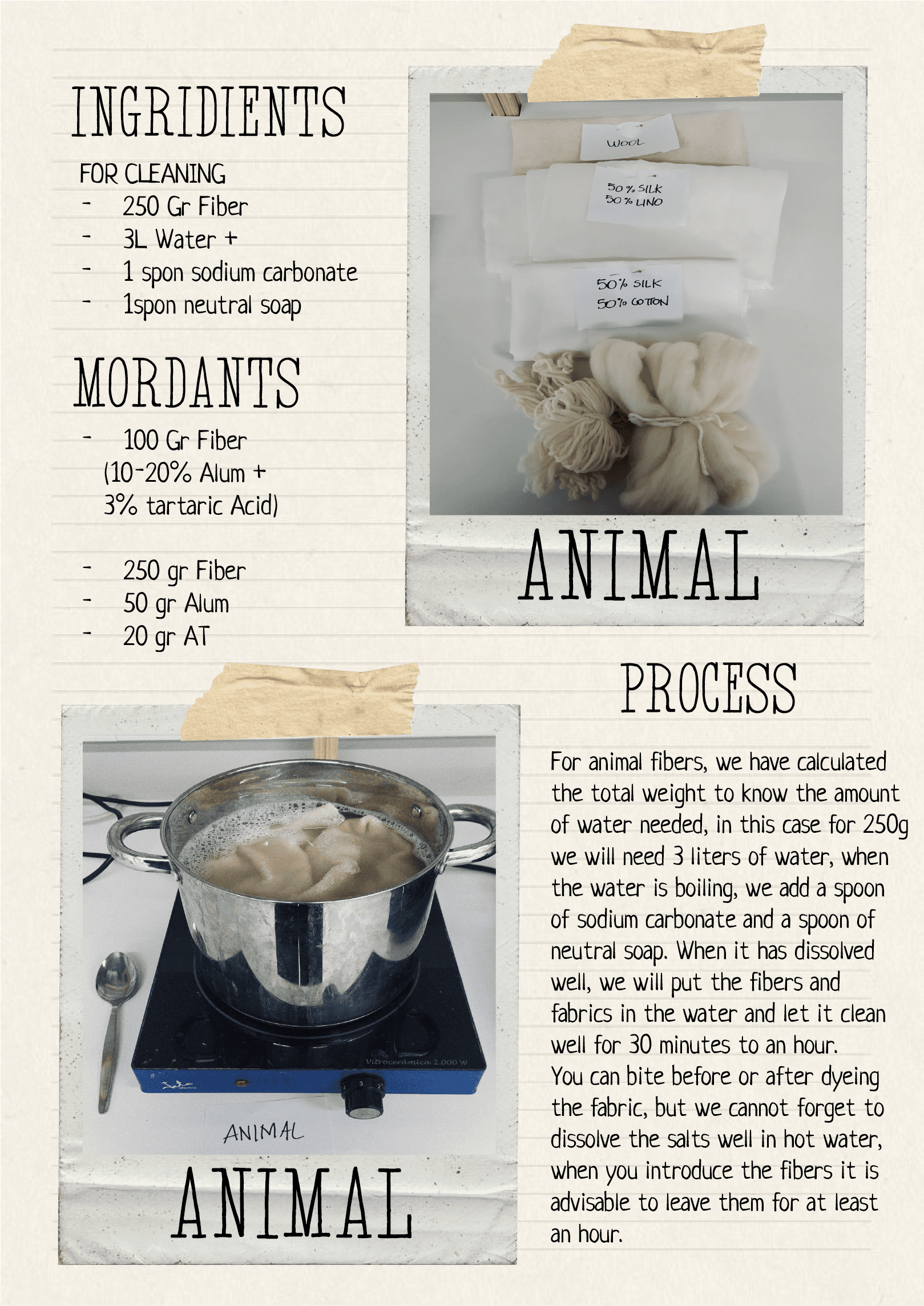

INVESTIGATION¶
Once we have followed the washing process and our fabrics and fibers have dried, we made our dyes an we have begun to experiment with mordants.

INSPIRATION¶
HIBISCUS I have decided to choose the hibiscus flower to dye my textiles and fibers, since this summer i discovered it on my trip to Egypt, I was impressed by its color, smeell and multiply properties that help me personally, that is why i am going to explain a little about it below.
The hibiscus flower or Jamaica's flower, already in ancient times, the Asians and Egyptians exploited its virtues of the hibiscus for its qualities as numerous benefits for our health are attributed to it, being one of the medicinal plants with the best reputation.
The flower has the same attributes as the cotton flower and the cocoa flower, among others. It is a flowering shrub that grows naturally in tropical and subtropical regions of the planet, although we can see it anywhere in the world.
Its use in traditional medicine cuts across many cultures. While in North Africa they consider hibiscus infusions a powerful remedy against colds, in India they use it to relieve urinary tract infections and in Brazil they use its roots to relieve stomach pain. It contains abundant organic acids, such as hibisc, malic and tartaric acids, as well mucilages, phytosterols and pectin, and is considered a privileged source of Vitamin C. Its properties are multiple: IS an antioxidant, regulates high blood pressure and blood sugar.
The hibiscus flower has many other applications. In some contries they consider hibiscus flowers as part of their diet, in other regions the seeds are used to make oils, both for food and for medicinal uses, and even the flower extracts are used in the pharmaceutical and food industry.
Its sharp acid flavor and intense purple color are grat culinary interest and allow its uses in the kitchen to be infinite. They are eaten raw, cooked, pickled or in syrup. Its reddish colow allows it to be used as a natural dye to color recipes and textiles.
Although the hibiscus flower is used from the seeds to the roots, currently the most widespread forms of consumption are to take the deshydrated flower and/or take the dried flower in the form of an infusion, which is what we will use in this project to dye our fibers and textiles.
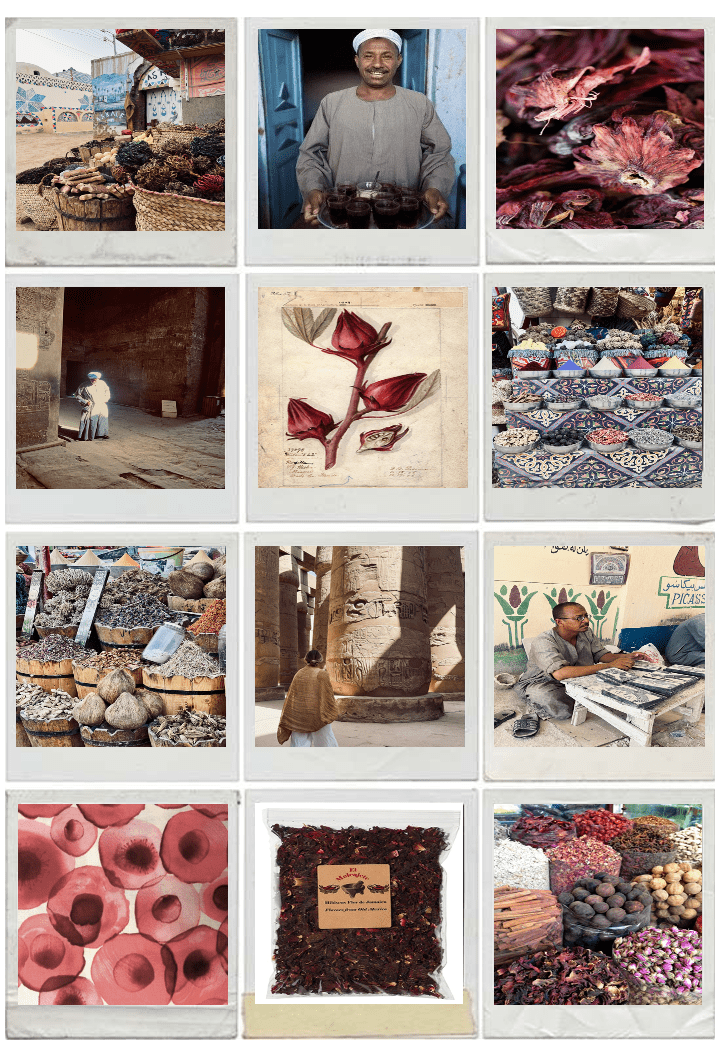
CONTENT¶
Following this lines, the recipe will be shown and it will be explained step by step how we have made the natural hibiscus dye to dye our fabrics and fibers. Is it important to specify that for this recipe we have been used 100gr of fabric for each sample and 50gr of hibiscus to cook the dye.
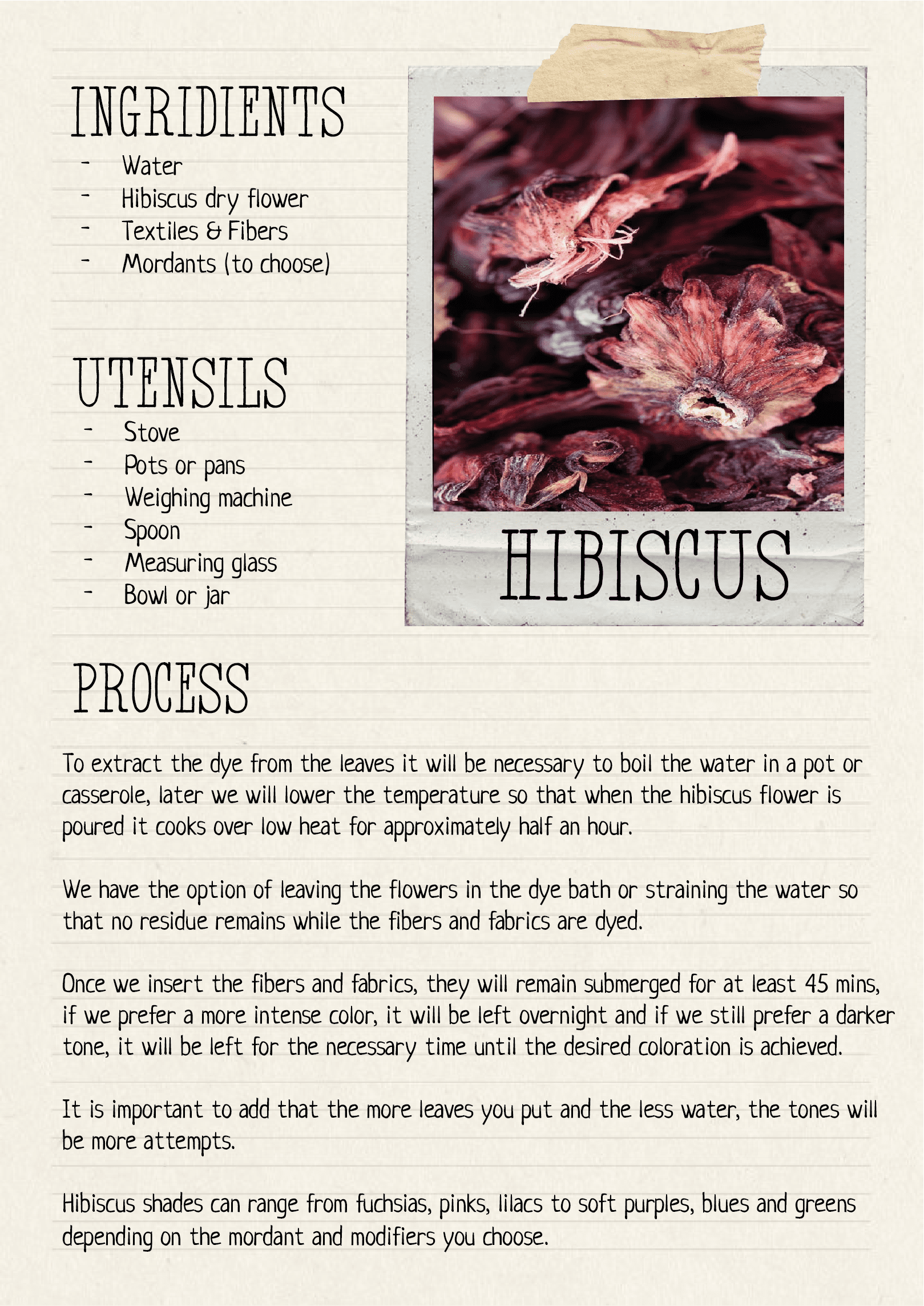
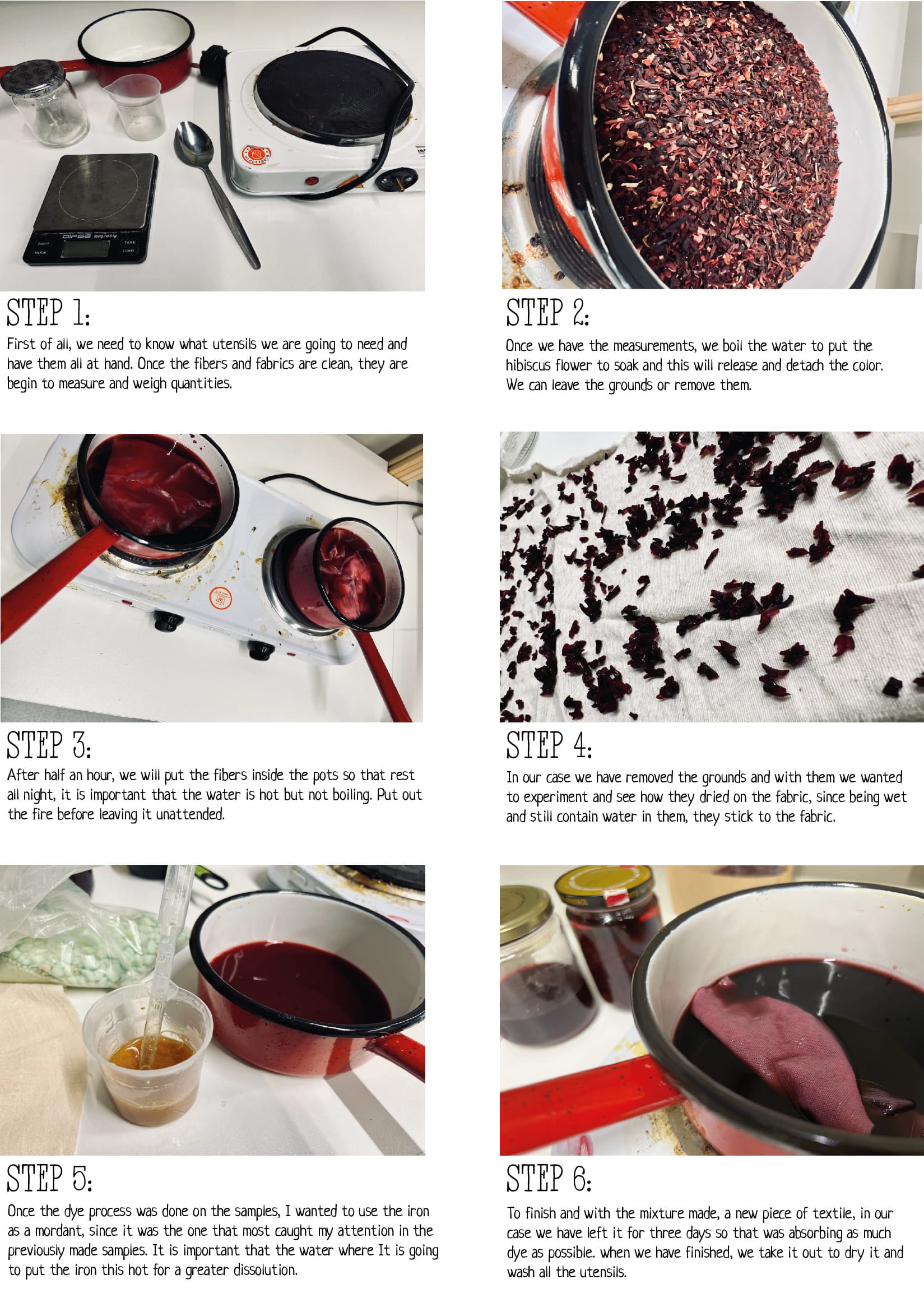
OBSERVATIONS¶
It is important to take into account the amount of dye that we are going to need, since the hibiscus plant absorbs 50% of the water while its cooking and the color is released, that means that 500ml will remain in 250ml, a sufficient quantity for sampples.
RESULTS¶
Below you will see the results that have been formed after the process and the steps explained above, it must be added that the possibilities are endless, there is no mistake.
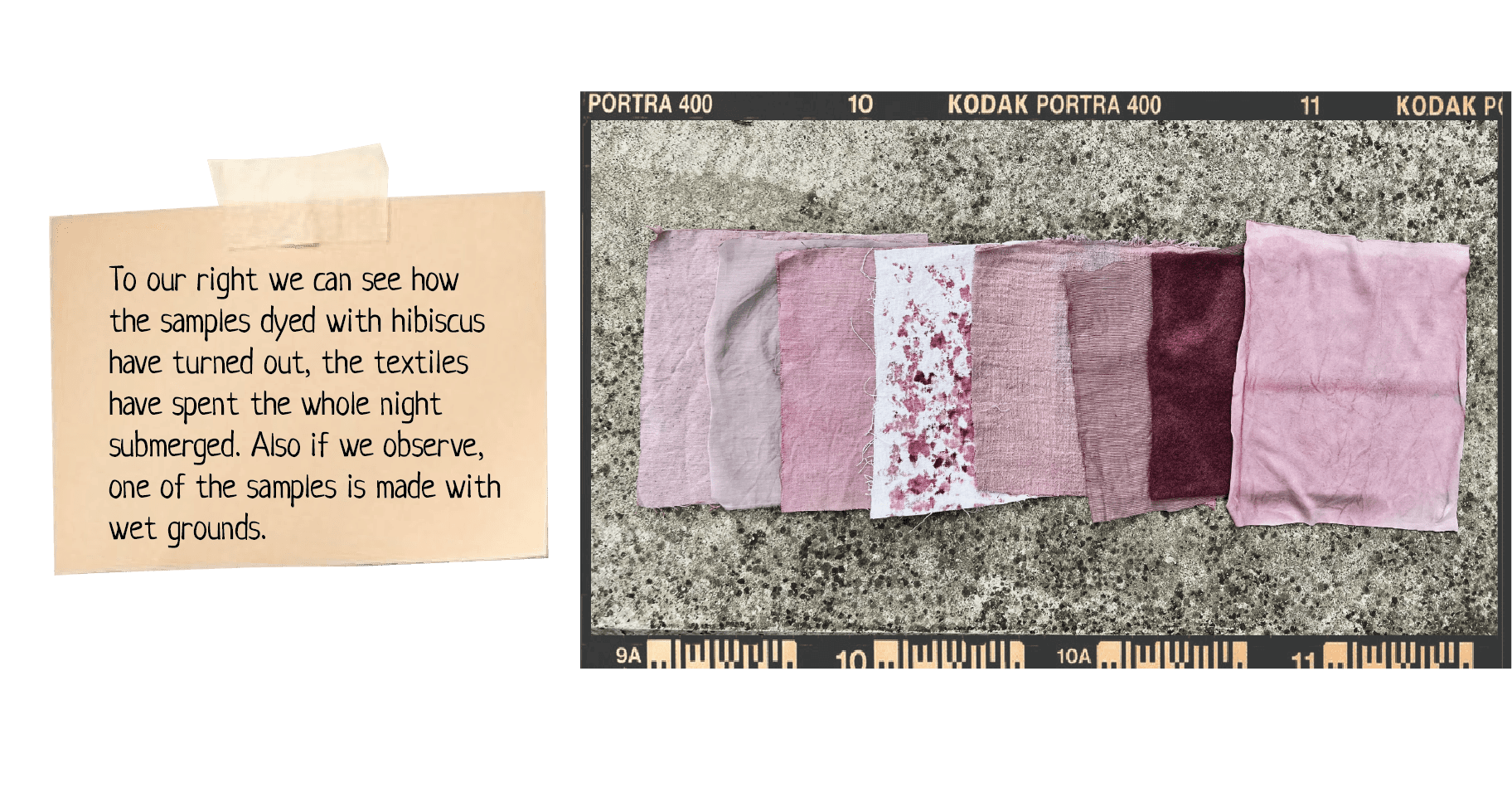

BDC¶
BACTERIAL INKS¶
To finish and no less important, this week we have made a master class with Jess, she has traveled to Bilbao to explain the process of how we can obtain dyes through basterias, it has been an amazing workshop that shows how the future is in our hands and how the science and craft could go hand in hand.
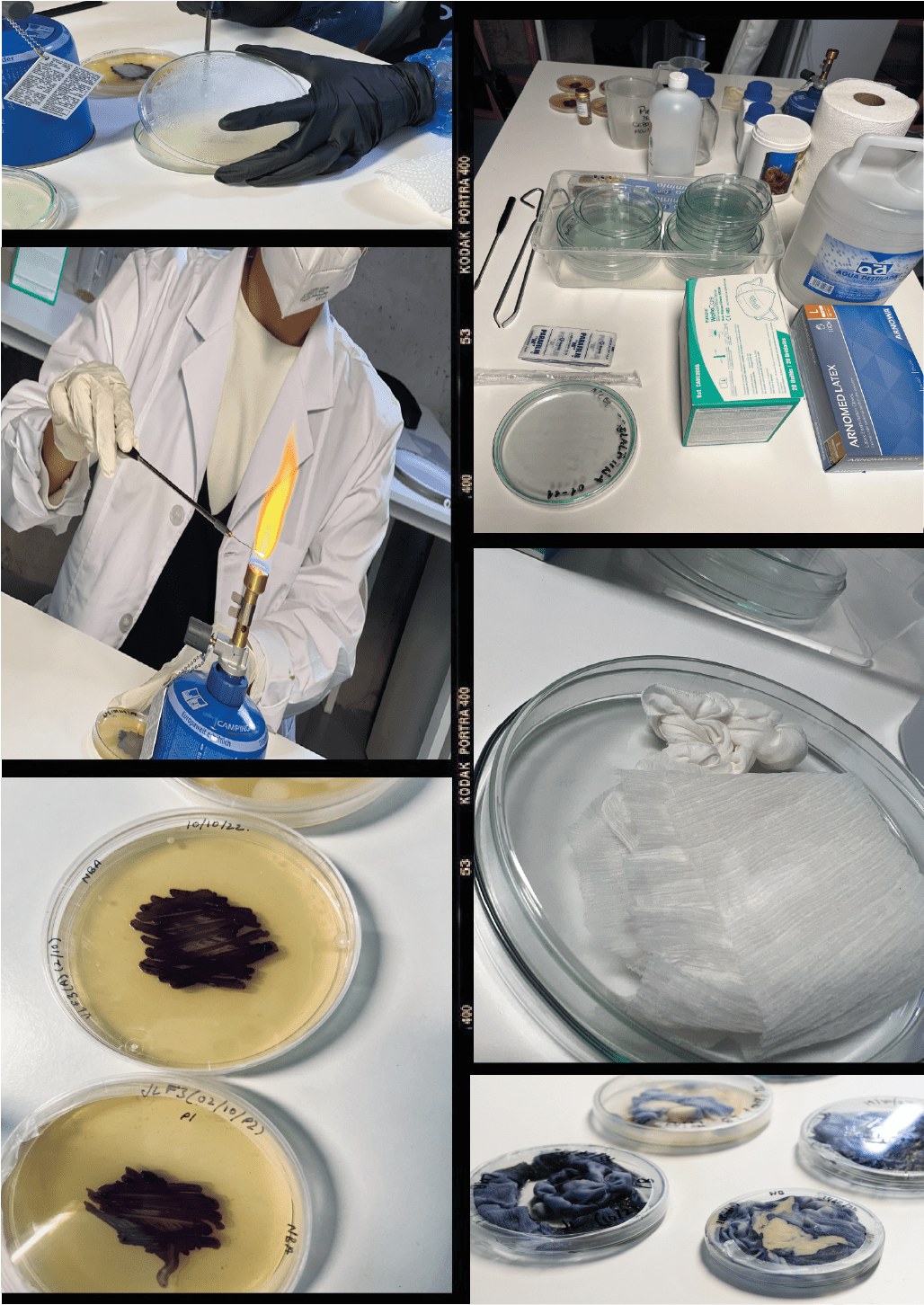 It is important the Purification of the space and instruments that we are going to use so the Bacteria Nutrient Agar or the Bacteria LB Broth can grow with any other bacteria around. Thats means that we will need to wear a proper lab coat, mask and gloves to avoid the direct contact with the bacteria and keep it safe both of us.
It is important the Purification of the space and instruments that we are going to use so the Bacteria Nutrient Agar or the Bacteria LB Broth can grow with any other bacteria around. Thats means that we will need to wear a proper lab coat, mask and gloves to avoid the direct contact with the bacteria and keep it safe both of us.
For the process we will need these instruments:Petri dish, Camping Gas, Gloves, Mask, Labcoat, Innoculation Loop, Presser Cooker.
 We will sterilize the textile and food bacteria through a pressure cooker to avoid any type of contamination; for the bacteria food, we already used the LB Broth in the glass in a 500ml bottle of water, Nutrients and Glycerine. Also to be able to grow the bacteria we would require a liquid medium which is LB Broth; and for reproduce the bacteria on several plates we require Medium agar that is Agar Agar.
We will sterilize the textile and food bacteria through a pressure cooker to avoid any type of contamination; for the bacteria food, we already used the LB Broth in the glass in a 500ml bottle of water, Nutrients and Glycerine. Also to be able to grow the bacteria we would require a liquid medium which is LB Broth; and for reproduce the bacteria on several plates we require Medium agar that is Agar Agar.
When the textile and the food are already sterilized, we will follow the steps and instruments that are seen in the video, this is the process in which we feed the textile, to later leave it for a couple of days so that the bacterial dye feeds and spreading through the textile.
It is important to add that before opening the petri dish and seeing the final result, it will be necessary to sterilize it again.
